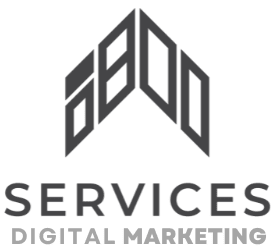1. Advanced Web Analytics
- Definition: Web analytics involves the measurement, collection, and analysis of data related to website usage. It provides insights into user behavior, helping businesses understand how visitors interact with their online platforms.
- Importance: Web analytics is crucial for businesses to assess the effectiveness of their online presence, optimize user experiences, and make informed decisions to achieve their goals.
- Need: Businesses need web analytics to track website performance, identify areas for improvement, and tailor strategies based on data-driven insights.
2. Google Analytics
- Definition: Google Analytics is a web analytics service by Google that tracks and reports website traffic. It offers valuable insights into user behavior, traffic sources, and the overall performance of a website.
- Importance: Google Analytics is crucial for businesses to understand how users find and navigate their websites, enabling them to make data-driven decisions to enhance user experiences and achieve business objectives.
- Need: Businesses need Google Analytics to gain a comprehensive view of website performance, uncover opportunities for optimization, and measure the impact of marketing efforts.
3. Key Performance Indicators (KPIs)
- Definition: Key Performance Indicators (KPIs) are specific metrics used to evaluate the success of an organization or a particular activity. They serve as measurable goals aligned with business objectives.
- Importance: KPIs are crucial for businesses to track and measure progress toward their goals, providing a clear understanding of performance and highlighting areas that may need attention.
- Need: Businesses need KPIs to set benchmarks, monitor performance, and ensure that their efforts contribute to overall success.
4. Data Tracking and Collection
- Definition: Data tracking and collection involve the systematic gathering of information, often through tools like Google Analytics, to monitor user interactions, website performance, and other relevant metrics.
- Importance: Data tracking and collection are crucial for businesses to gather actionable insights, understand user behavior, and make informed decisions for website optimization.
- Need: Businesses need data tracking and collection to collect relevant information, uncover patterns, and identify opportunities to improve their online presence.
5. Data Analysis and Interpretation
- Definition: Data analysis and interpretation involve examining collected data to draw meaningful conclusions. It entails understanding patterns, trends, and correlations within the data.
- Importance: Data analysis is crucial for businesses to transform raw information into actionable insights, facilitating informed decision-making and strategic planning.
- Need: Businesses need data analysis and interpretation to extract valuable insights from their collected data, enabling them to make data-driven decisions that positively impact their objectives.
6. Conversion Tracking
- Definition: Conversion tracking involves monitoring and measuring specific actions or events on a website, such as form submissions or product purchases. It helps businesses understand how effectively their website drives desired outcomes.
- Importance: Conversion tracking is crucial for businesses to assess the success of their online goals, optimize conversion paths, and refine strategies to boost overall conversion rates.
- Need: Businesses need conversion tracking to identify which actions contribute most to their objectives, allowing for targeted improvements and increased effectiveness.
7. Funnel Analysis
- Definition: Funnel analysis involves mapping out the steps users take on a website leading to a specific goal, such as making a purchase. It helps businesses visualize the user journey and identify points of drop-off or optimization.
- Importance: Funnel analysis is crucial for businesses to understand user behavior, pinpoint areas for improvement, and streamline the conversion process for better results.
- Need: Businesses need funnel analysis to visualize the user journey, identify obstacles, and optimize the flow of interactions to maximize the likelihood of conversions.
8. Click-Through Rate (CTR)
- Definition: Click-Through Rate (CTR) is a percentage that represents the ratio of users who click on a specific link to the number of total users who view a page, email, or advertisement.
- Importance: CTR is crucial for businesses to evaluate the effectiveness of their marketing materials, measure user engagement, and assess the appeal of their content.
- Need: Businesses need CTR to gauge the success of their call-to-action elements, refine content strategies, and optimize campaigns for increased user interaction.
9. Bounce Rate
- Definition: Bounce Rate is the percentage of visitors who navigate away from a website after viewing only one page. It indicates the proportion of single-page sessions.
- Importance: Bounce Rate is crucial for businesses to assess the relevance and engagement of their landing pages. A high bounce rate may suggest a need for improvements in content or user experience.
- Need: Businesses need to monitor bounce rates to identify pages that may require optimization, ensuring that visitors find valuable content and stay engaged on the site.
10. Exit Rate
- Definition: Exit Rate is the percentage of users who leave a website from a specific page. It represents the last page viewed in a session.
- Importance: Exit Rate is crucial for businesses to identify pages where users commonly exit, helping them pinpoint potential issues and optimize those pages for better retention.
- Need: Businesses need to track exit rates to improve the user experience, reduce page abandonment, and guide visitors toward desired actions.
11. User Behavior Analysis
- Definition: User Behavior Analysis involves studying how visitors interact
with a website, including the actions they take, pages they visit, and the duration of their sessions. It provides insights into user preferences and behavior patterns. - Importance: User Behavior Analysis is crucial for businesses to understand how visitors navigate their websites, make decisions, and interact with content. This information helps in optimizing the user experience for better engagement and conversions.
- Need: Businesses need user behavior analysis to tailor their websites to user preferences, identify popular content, and address any pain points in the user journey.
12. Heatmaps and Click Tracking
- Definition: Heatmaps and Click Tracking tools visually represent user interactions on a website. Heatmaps show areas where users click, move, or spend the most time, helping businesses understand user engagement.
- Importance: Heatmaps and Click Tracking are crucial for businesses to visually analyze user behavior, identify hotspots, and optimize webpage layouts for improved user engagement.
- Need: Businesses need heatmaps and click tracking to visualize user interactions, make informed design decisions, and enhance the overall user experience.
13. Event Tracking
- Definition: Event Tracking involves monitoring specific interactions on a website, such as clicks on buttons, downloads, or video views. It helps businesses track user engagement with specific elements.
- Importance: Event Tracking is crucial for businesses to understand how users interact with key elements on their website, providing insights into the effectiveness of various features.
- Need: Businesses need event tracking to measure the success of specific actions or features, optimize user engagement, and refine their digital strategies.
14. Segmentation and Audience Analysis
- Definition: Segmentation involves categorizing website visitors into specific groups based on shared characteristics. Audience analysis examines the behavior and preferences of these segmented groups.
- Importance: Segmentation and Audience Analysis are crucial for businesses to target specific user groups, personalize content, and tailor marketing strategies to different audience segments.
- Need: Businesses need segmentation and audience analysis to deliver relevant content, improve user engagement, and create more effective marketing campaigns.
15. Cohort Analysis
- Definition: Cohort Analysis involves grouping users based on shared characteristics or behaviors and analyzing their performance over time. It helps businesses track user retention and behavior patterns.
- Importance: Cohort Analysis is crucial for businesses to understand user loyalty, track the impact of marketing initiatives, and identify trends among specific user groups.
- Need: Businesses need cohort analysis to evaluate the long-term impact of strategies, refine user retention efforts, and tailor marketing approaches to different user cohorts.
16 Attribution Modeling
- Definition: Attribution Modeling involves assigning value to various touchpoints in the customer journey to understand which channels contribute most to conversions. It helps businesses allocate credit to different marketing efforts.
- Importance: Attribution Modeling is crucial for businesses to identify the most influential touchpoints, optimize marketing budgets, and understand the customer journey’s impact on conversions.
- Need: Businesses need attribution modeling to make informed decisions about resource allocation, ensuring that marketing efforts are directed towards the most effective channels.
17. A/B Testing Analysis
- Definition: A/B Testing involves comparing two versions (A and B) of a webpage or element to determine which performs better. A/B Testing Analysis examines the results to make data-driven decisions.
- Importance: A/B Testing Analysis is crucial for businesses to refine and optimize elements on their website, such as headlines, images, or call-to-action buttons, based on user preferences.
- Need: Businesses need A/B Testing Analysis to systematically improve website elements, enhance user engagement, and increase conversion rates by implementing changes backed by data.
18. Data Visualization and Reporting
- Definition: Data Visualization and Reporting involve presenting complex data in a visually understandable format, often using graphs, charts, or dashboards.
- Importance: Data Visualization and Reporting are crucial for businesses to quickly grasp insights, trends, and patterns within the data, facilitating better decision-making.
- Need: Businesses need data visualization and reporting to communicate insights effectively, simplify complex data sets, and share key metrics with stakeholders.
19. Real-time Analytics
- Definition: Real-time Analytics provides immediate insights into website or marketing performance as it happens, allowing businesses to respond promptly to changing conditions.
- Importance: Real-time Analytics are crucial for businesses to monitor live campaign performance, detect issues promptly, and make instant adjustments to improve outcomes.
- Need: Businesses need real-time analytics to respond quickly to changing user behavior, address issues in real-time, and optimize campaigns for better results.
20. Predictive Analytics
- Definition: Predictive Analytics involves using data, statistical algorithms, and machine learning techniques to identify future outcomes or trends. It helps businesses make proactive decisions based on anticipated behavior.
- Importance: Predictive Analytics is crucial for businesses to forecast future trends, anticipate user behavior, and make informed decisions that contribute to long-term success.
- Need: Businesses need predictive analytics to stay ahead of market trends, make strategic decisions, and position themselves for success by leveraging insights into future possibilities.
Transform with Digital Excellence!
As of December 2023, a report shows that 91% of businesses are actively involved in various digital initiatives, and 87% of senior business leaders consider digitalization a top priority. Additionally, 89% of companies have either already implemented a digital-first business strategy or have intentions to do so.

The problem
In this digital age, businesses often struggle to cut through the noise and capture the attention of their target audience amidst the vast online landscape.
The Solution
Harnessing the power of digital marketing, businesses can strategically reach their audience where they spend most of their time online.
